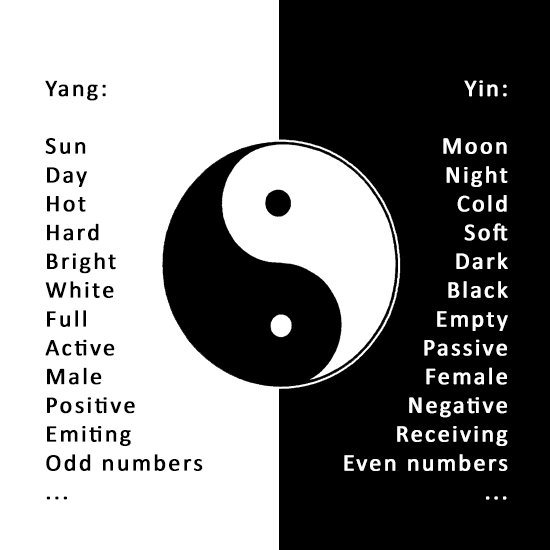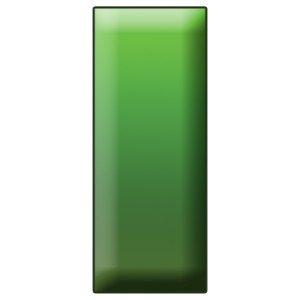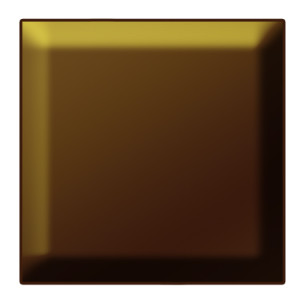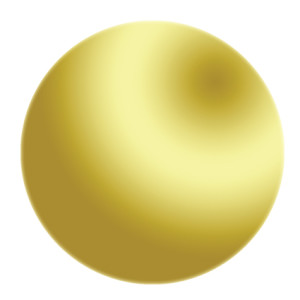The 5 Elements are a notion used very extensively in Feng Shui, Chinese astrology such as Bazi, Chinese medicine and in fact in every aspect of the traditional Chinese philosophy. This article aims at covering different aspects of the 5 Elements. We will see the shapes, colors, cycles but also placement, season and other layers. I hope you will enjoy this definitive guide to the 5 Elements in Feng Shui.
The 5 Elements: a theory of the Chi on Earth.
To understand what the 5 Elements are, we need to go back to the basics: that is, the Qi. If we look at the chronology of the Qi in Chinese metaphysics, first we have a primordial soup of energy. Kind of like the big bang. This is the Universe in harmony and perfect state of balance. Out of this unity then emerges two polarities: the Yin and the Yang. Everyone nowadays uses those notions and we think we get them; it is however important to explain what they precisely are. What physics knows is that movement between particles cannot be created if there is no difference in polarities. So, the Yin and Yang is the same principle: two polarities create movement, generate the Qi and then life. They are opposite but also absolutely complementary: one does not exist without the other and one is defined through the other. In that sense it is not correct to see them as good or evil, the black vs white morality that is often used in the West. It is subtler than this. Would you say that male is bad, female good? Hot is good, cold is bad? How do you even define hot if you haven’t experienced cold? It doesn’t really make sense does it? So, same idea here. They just are two different states.
With this in mind, some of the notions associated with Yin and Yang are as follow:
Once we have two polarities, the two can play together and generate a third state or more. They basically make babies together! Those babies are different state of the Qi and are represented the trigrams. And once those trigrams are combined, they make hexagrams: but that is the realm of the I Ching. The trigrams, which are eight different forms, describe different states of the Yin-Yang interaction through natural phenomena. The birth of the trigrams has generated movement and this movement has created life and different aspects of what we now call the Qi. So, for example, the Dui trigram represents extreme Yang. We now have Yin and Yang and different states of Yin and Yang and the Qi.

The birth of the trigrams from the Tai Qi. Credit: http://blindmen6.tumblr.com/post/23558308557/derivation-of-the-trigrams-this-diagram
So how do the 5 Elements fit in? Likewise, the 5 Elements are differents aspects of a natural cycle. They are another way to describe the Yin-Yang evolution. Why two different systems then? Well, historically the Yin-Yang and 5 Elements theory was developed by the naturalist school that was then absorbed by the Taoist school – and those guys brought the trigrams in. I hope it makes sense now.
So while the hexagrams describe different aspects of the physical world, the 5 Elements or phase that are also generated by the interaction of Yin and Yang represent different aspects of the Qi. As such, they are the building materials of our reality, like five essential lego bricks. Both notions are related. Wait a minute, is it really Five Elements by the way?
Lost in translation.
The Chinese expression for this concept is Wu Xing. Now, I am not a Chinese scholar, so here is what Wikipedia has to say about it: The Wu Xing (Chinese: 五行; pinyin: Wǔ Xíng), also known as the Five Elements, Five Phases, the Five Agents, the Five Movements, Five Processes, and the Five Steps/Stages. As you see, there is often the small matter of translating a Chinese concept into English or any other languages. What is important to remember is that there are not really Elements as such: they are rather a state of the Qi. A bit like water can be ice, steam or a fluid. It is still water right? But different states. So, the Qi can take the form of Wood, Fire, Earth, Metal and Water. There are called Elements in analogy with the system of the 4 Elements (air, fire, water, earth, expression of the ether) and also because they have an affinity with the physical elements associated with them. For example, the phase of Wood can be strengthened by some real wood and green color, but it encompasses much more than just physical wood. I hope this clarifies the concept.
Time now to explore those 5 Elements or phases in details.
Wood
The Wood Element is the one representing new life emerging: it is linked to the idea of growth and expansion, as well as with the quality of imagination and a lot of artistic activities (writing, drawing, designing for example). As it represents a youthful Qi and beginnings, it is logical to see it at the inception of the Elements cycle here. Its dynamics is to be expanding.
The Wood attributes are therefore:
- Growing
- Expanding
- Beginning
- New life, young Qi
It has an association with movement as well, as the wind is seen as related to the Wood Qi.
- The colors of the Wood are green and beige
- The shape is the rectangle, either horizontal or vertical
- The associated planet is Jupiter
- On the Bagua, the Wood occupies the East and Southeast sector
- It is associated with the Spring season
Fire
The Element of Fire is by nature very versatile, hot and fast. Its dynamics is to go upward, to rise above. It is the hottest of the 5 Elements and also the one with less density. It is therefore not surprising to see this Element associated with the spiritual realm for example and the idea of channeling. The different attributes of the Fire are as follow:
- Goes upward
- Hot and fast
- Explosive
- Volatile
The Fire colours are:
- Red
- Pink
- Orange
- Maroon
- Purple, aubergine
- And the electric of Fire blue. Think of the color of the flame on a gas stove.
The shapes associated are:
- Triangles
- Stars
- Spikes
- Angular shapes
- Irregular shapes that are pointy rather than curvy
- The planet associated is Mars.
- For its placement on the Bagua, the Fire belongs to the South direction and sector. This explains the different placements of directions on a Chinese compass. As Chinese see the Fire rising and its association to the South, the South is naturally placed on top of the compass (or Luo Pan) rather than at the bottom like in western compass.
- The Fire is associated with the summer season, which is normally the hottest of the year
Earth
The Earth Element is dense and one of the most physical. It is by nature heavy and has a special place in the 5 Elements cycle (more on this later on). Its natural dynamics is to be compiling. Think of the different layers that constitute the soil for example…
The Earth attributes are therefore:
- Dense
- Solid
- Physical
- Accumulating
- The colors associated are yellow and brown (not beige, brown!).
- The associated planet is Saturn
- The Earth shape is the square
- On the Bagua, the Earth is associated with the center as well as with the Northeast and Southwest directions.
- There is no real Earth season; rather the Earth appears during the inter-seasons that last for 18 days (4 of them so 72 days altogether); this is the transition between Summer and Autumn for example. This indicates the special status of the Earth Element that is more a binding Element, more of this later on
Metal
The Metal is flexible, ductile, and a real chameleon. It can either be used to cut and be offensive, or as a glamour factor to enhance the appearance. The Metal is the Element that directly refers to human activity, as without human intervention a nugget of mined metal cannot become a tool to cut the Wood or a piece of jewelry. While the Metal phase is as legitimate as the others in the cycle of Elements, it needs human intervention to unlock its potential. That explains why the Metal Qi relates to a lot of human system and activities too (government, banking, law enforcement, police and military etc.)
The dynamics of the Metal is to be contracting, in opposition with the expanding energy of the Wood.
The Metal attributes are therefore:
- Contracting
- Flexible
- Adaptive
- Attractive
- The colors associated are: grey, silver, white and all the metallic tones
- The associated planet is Venus
- The shapes are circular: rounds, spheres, and cylinders
- In the Bagua, the Metal is associated with the West and Northwest.
- It represents the autumn season
Water
The Water Element is often restless, like the Fire. It is the second Element most associated with the idea of fast movement. It brings life but it can also be an unstoppable force of nature. The Water Element is closely associated with emotions and the subconscious mind.
The dynamics of the Water Element is to always go to the lowest point, downward, in opposition with the movement of the Fire that is ascending.
The Water attributes are therefore:
- Going down
- Cold
- Fluid
- Ever changing
- Dormant
- The colors associated are black and the shades of blue outside of the Fire blue
- The associated planet is Mercury
- The shapes are all the irregular but curvy shapes, akin to waves
- On the Bagua, the Water Element is associated with the North sector
- It represents the Winter season
- It can be seen as the end of a cycle before a transition (through Earth) and a new cycle beginning with the Wood in the East
A quick word on the matter of the Southern hemisphere Bagua…
We noted that Chinese place Fire and its associated direction, the South, on top of the compass and Bagua; North is therefore down. On the points of seasonality and placement, some argue that when used in the Southern hemisphere, the Bagua should then be reversed. So you would use the regular Feng Shui Bagua in London and a southern Bagua upside down for Australia, for example. The logic is that the summer season is at an opposite time in the Southern hemisphere and that the South direction is associated with cold rather than heat, and North is hotter in this hemisphere. Granted, those differences are real.
This however overlooks the fact that the Yin/Yang and 5 Elements theory account of the Qi everywhere in our planet. Remember that the Qi and the Bagua have a strong association with magnetism. You can place South on top or at the bottom, but it is nevertheless still based on the magnetic North/South axis. What is truth is that the South direction in the southern hemisphere will be associated with more cold, and the North more heat usually. But folks, the Earth is round! If you keep going south you’ll eventually meet some heat right? So, remember that the Elements translate a theory of the physical Universe and that the principles apply everywhere on Earth. If you start to go with the logic of a southern hemisphere Bagua and reverse it, then which Bagua do you use on the Equator axis?
I invite you to discover the second part of this exploration of the Five Elements here: http://laurentlanglais.com/5-elements-guide-elemental-frames/







Pingback: Chinese astrology: Bazi predictions for the Rooster month – Laurent Langlais
Pingback: World predictions for the Chinese year of the Earth Dog/2018. – Laurent Langlais